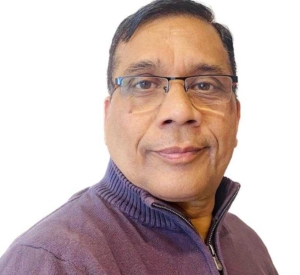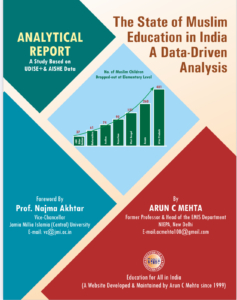Rethinking Classroom Surveillance: Trust Teachers Over Cameras
Introduction
The debate over installing CCTV cameras in school classrooms has intensified in India, driven by concerns over student safety but challenged by privacy, trust, and educational quality issues. A recent opinion piece in Live Mint, by Anurag Behar, titled “Education accountability: Dump classroom cameras and trust teachers,” argues that surveillance undermines the core principles of teaching by signalling distrust in educators and disrupting the human bonds essential to learning. At Education for All in India, we align with this view – cameras in classrooms are intrusive and counterproductive. We advocate trusting teachers, who are driven by a deep sense of responsibility. This article critically analyses the history, implementation, opposition, and practical implications of classroom CCTV in India, integrating insights from Samagra Shiksha, UDISE+ data, and NEP 2020 goals.
Smart Teachers: Born or Made?: Challenges and Actionable Strategies for India’s Education System
History of Classroom CCTV in India
The use of CCTV in Indian schools began in the early 2000s, primarily in urban private schools’ corridors and entrances for security. Classroom surveillance gained traction around 2017-2018, spurred by high-profile safety incidents. Delhi pioneered this in 2017, announcing CCTV in all government school classrooms with live parental access via a mobile app. By 2018, over 1,000 Delhi government schools had cameras, excluding washrooms. The 2017 Gurugram school murder fuelled this trend.
Maharashtra followed in 2019, mandating CCTV initially for common areas but sometimes extending to classrooms. By 2022, Hyderabad emerged as a highly surveilled city, including schools. In 2025, the Central Board of Secondary Education (CBSE) mandated high-resolution CCTV with audio-visual capabilities in all affiliated schools’ classrooms, aligning with National Commission for Protection of Child Rights (NCPCR) guidelines.
Opposition to Classroom Cameras and Their Logic
Teachers’ unions, parents, and privacy advocates strongly oppose classroom CCTV. In Delhi, a 2019 petition argued it violated privacy rights under Article 21. The Government School Teachers Association highlighted that monitoring erodes morale, stifles creativity, and creates stress, potentially harming academic outcomes.
Opponents argue cameras foster mistrust, ignoring teachers’ inherent responsibility, as noted in the Live Mint piece. Privacy risks are significant – footage of minors could be misused without robust safeguards. A 2019 Israeli study, cited in India, showed surveillance demoralizes teachers and lowers their social status. Critics also argue it’s a superficial fix that diverts resources from teacher training or addressing socio-economic barriers, turning schools into surveillance states.
Current Implementation: States, Guidelines, and Scope
As of 2025, at least 10 states and union territories, including Delhi, Maharashtra, Andhra Pradesh, Karnataka, Odisha, Chandigarh, and Uttar Pradesh, have mandated or are installing classroom CCTV. CBSE’s 2025 mandate covers 28,000+ affiliated schools, including government and private institutions. Implementation varies; Maharashtra faced delays in government schools by 2025.
NCPCR’s 2021 safety manual recommends CCTV but doesn’t mandate classroom coverage, focusing on monitoring and maintenance. CBSE’s 2025 directive requires high-definition cameras with audio, 15-day storage, and coverage in classrooms and common areas (excluding washrooms). States have autonomy, as education is a concurrent subject, leading to variations like Maharashtra’s roll-call focus or Delhi’s parental access.
Surveillance shouldn’t be limited to government schools – safety concerns are universal. Private unaided schools, with 50-60% having CCTV compared to 30-40% of government schools, are also under CBSE’s mandate.
Data Insights: Samagra Shiksha and UDISE+ Trends
UDISE+ data provides context for India’s education landscape, relevant to resource allocation debates like CCTV. India has 1.47 million schools with approximately 12.85 million classrooms (8-9 per school). Gross Enrolment Ratio (GER) trends from 2012-13 to 2024-25 show progress but challenges. Primary GER was 101.4% in 2012-13, dipping to 90.3% by 2024-25; secondary GER rose from 67.1% to 78.7%. However, Net Enrolment Ratio (NER) at the primary level declined from 92.7% (2020-21) to 76.4% (2024-25), signalling retention issues.
Dropout rates at the secondary level (2020-21 to 2023-24) remain concerning, averaging 13-15% annually, with rural areas and marginalized groups most affected; it is reported to be 11.5 percent in 2024-25 These trends, analysed by Prof. Arun C. Mehta, highlight NEP 2020’s challenge of achieving 100% GER by 2030. Resources spent on surveillance could instead address these gaps.
Practical Challenges: Costs, Servers, and Monitoring
Installing CCTV in 1.47 million schools’ 12.85 million approx classrooms could cost approx Rs 74 thousand crore, based on Rs 5-6 lakh per school. This excludes maintenance and upgrades, diverting funds from teacher training or infrastructure under Samagra Shiksha.
Servers use local DVR/NVR or cloud systems, with CBSE mandating 15-day storage. Monitoring typically involves headmasters, with access sometimes extended to cluster, block, or district levels; Uttar Pradesh allows state-level oversight. Limiting monitoring to block level, as suggested, ensures contextual accountability and aligns with Samagra Shiksha’s decentralized approach.
Concluding Observations
Classroom CCTV, while aimed at safety, risks undermining trust, as argued in the Live Mint article. UDISE+ data underscores the need to prioritize enrollment and retention over surveillance to meet NEP 2020 goals. Investing in teacher empowerment and community governance, as advocated by Education for All in India, is more effective. For further insights, explore NCPCR guidelines (link) and CBSE’s directive (contact CBSE for the latest circular). Trust teachers, not cameras, to build a better education system.
Explore more on Education for All in India | Prof. Arun C. Mehta’s Work | Samagra Shiksha


